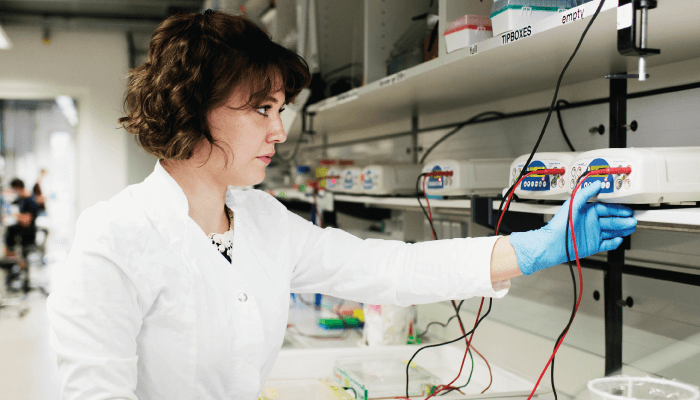It was by serendipity that Hendrik Dietz, Professor of Biomolecular Nanotechnology at the Physics Department of the Technical University of Munich, and his team of scientists learned how to make a virus trap (1).
“We were working on building virus-sized icosahedral shells for several years (1, 2), and also on ways to produce many such objects (3)” says Dietz. “In summer 2019, I started thinking about applications and, well, it occurred to me: now that these things are virus-sized… how about putting viruses inside? And so we started testing this idea…”
The virus traps use nanocapsules to engulf and neutralize viruses – and have been tested successfully against hepatitis and adeno-associated viruses in cell cultures. Depending on the details of the trap design, they were able to reduce the activity of these viruses almost completely. Dietz hopes that the method could become a cheap, programmable, and mass-producible mechanical antiviral drug. Such a drug may prove very valuable, since the vast majority of viral diseases have no cure whatsoever.
He also provided a helpful “recipe” for the traps:
- Make two virus-sized half-shells. These are made by programmable self-assembly with DNA origami.
- Coat the interior of the half-shells with molecules that have an affinity for virus surface features, such as antibodies, peptides, or host receptor domains.
- Add to virus! The virus will be sequestered by the shells like flies on flypaper. The virus is now encased and can no longer interact with cells.
Although the work began pre-pandemic, it’s possible that the virus traps could also work against coronaviruses. Dietz and his team hope that their approach will reduce viral load in acute infections, offering a therapeutic benefit. The next step is to test the work in mice. Also on Dietz’s agenda are the production of broad-spectrum shells with coatings that will stick to many viruses and virucidal shells that feature enzymes capable of degrading a virus’ surface and rendering it harmless.

References
- 1. H Dietz et al., Nature Methods (2021). DOI: 10.1038/s41563-021-01020-4
- 2. H Dietz et al, Nature (2017). DOI 10.1038/nature24651
- 3. Praetorius et al, Nature (2017). 10.1038/nature24650




